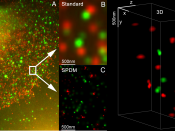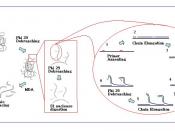Whole genome sequencing will cost ã1000 per patient by 2015. How will this change cancer medicine?
Introduction
Cancer is a general term for a large group of diseases characterized by unregulated cell division and growth. These cells form malignant tumours whose constituent parts can migrate and invade elsewhere in the body. Its notoriety is warranted due to its high prevalence, mortality and insidious onset. Treatment is currently suboptimal - about half of all invasive cancers cause death in the patient [1]. Chemotherapy, radiotherapy and surgery all aim at decreasing tumour size, but are often not curative. As whole genome sequencing becomes cheaper, it is feasible that it will become incorporated into routine investigations for new cancer patients, providing valuable insight into each specific tumour.
Genetic Background
Cancer is currently classified by tissue of origin (carcinomas, sarcomas, adenocarcinomas) and organ of origin [2]. There are over 200 different types of cancer, with different mechanisms of pathology, making it an extremely heterogeneous disease.
Despite this, it is possible to hallmark every cancer with six features [3]:
Growth signal autonomy
Evasion of growth inhibitory signals
Evasion of apoptosis
Unlimited replicative potential
Angiogenesis
Invasion and metastasis
These features come to fruition via genetic mutation and subsequent transcription - cancer is as a result of unrectified alterations to DNA via UV/ionising radiation, chemical carcinogens, infectious pathogens, and endogenous regulatory failure [2]. It is therefore a genetic disease potentially occurring both somatically and in germ line cells.
There are two groups of genes that are specifically mutated in malignancy: tumour suppressor genes and oncogenes [4]. The physiological role of tumour suppressor genes is to arrest inappropriate cell growth and repair DNA. A loss-of-function mutation is recessive and so must occur in both copies of the gene. This is known as the two-hit hypothesis, described by Knudson...


